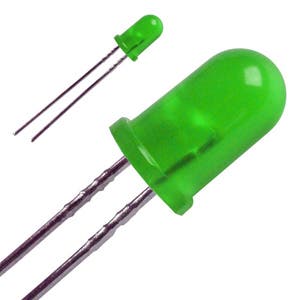
A group of researchers at MIT have successfully managed to create a light emitting diode (LED) that has an electrical efficiency greater than 100%. This might sound preposterous, and against everything you learned in physics, however the system is still governed by fundamental laws of thermodynamics.
This extraordinary power conversion efficiency was obtained by a decrease in applied voltage to an LED with a small band gap. As the voltage was steadily halved, it was observed that the electrical power was reduced by a factor of four, but the light power emitted only dropped by a factor of two. Where this extra energy come from? The key here is lattice vibrations caused by heat coming from the surroundings. Thus, the device’s efficiency is inversely proportional to its output power and diverges as the applied voltage approaches zero. Over 100% efficiency was reached in the experiments, all without violating energy conservation principles.
The best efficiency was reached when such a LED was plugged to 30 picowatts, powering a LED which produced 69 picowatts of light, in the trillionth of a watt order – 230% efficiency. There’s a huge flaw in this otherwise miracle system – the power itself is simply too small to light anything. The principle itself is terribly exciting and the MIT scientists involved in the research are confident these findings will aid new advances in energy-efficiency electromagnetic communication.
Results were described in a recently published paper in the journal Physical Review Letters.
Was this helpful?



